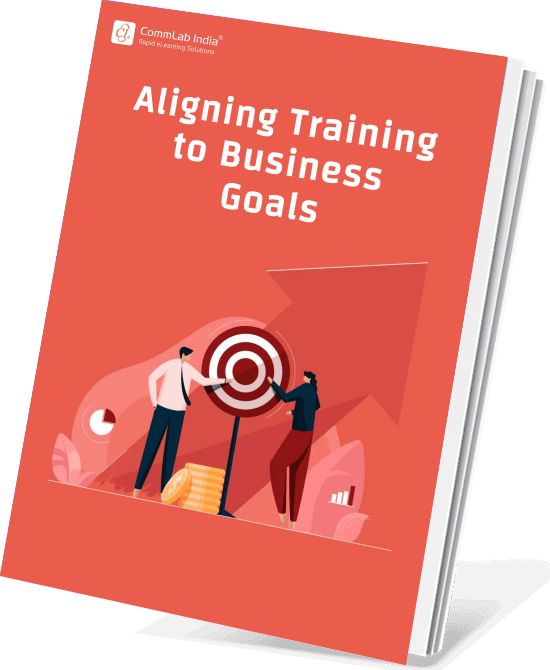Corporate Training Reimagined: Strategies That make Learning Count

Are you looking to make your corporate training programs more impactful? Many Learning and Development (L&D) professionals face the challenge of ensuring training delivers real results and drives meaningful change. By rethinking traditional methods, we can create programs that truly improve business performance and engage employees effectively!
→ Download Template: Align Training with Business Goals for Max Impact and ROI
Table Of Content
- Let's Make Corporate Training Count
- No Magic Wand, Just Strategic Methods
- Measuring True Corporate Training Impact
- Building Impactful Corporate Training Programs
- Communicating with Stakeholders
Let's Make Corporate Training Count
The root of the problem is the "check-the-box" mentality, where completing a training module becomes a formality rather than meaningful learning. For example, a compliance training might boast 100% participation, but what does it matter if employees still fail to follow key regulations or mistakes continue to occur?
Effective corporate compliance training should go beyond participation numbers—it must lead to real behavioral changes that reduce risks and improve adherence to policies. The C-suite wants tangible business outcomes, not just completed checklists. Did the training reduce compliance violations by 20%? Did it improve operational efficiency? The impact of training is often unclear, making it difficult to connect it to measurable improvements.The C-suite wants tangible business outcomes, not just completed checklists. Did the training reduce compliance violations by 20%? Did it improve operational efficiency? The impact of training is often unclear, making it difficult to connect it to measurable improvements.
Discover how corporate training programs can boost employee skills, productivity, and overall performance in the workplace!
No Magic Wand, Just Strategic Methods
Corporate training is not a miracle solution. It can't morph a struggling team into top performers overnight. However, the right corporate training solutions, integrated with supportive business processes and a continuous learning environment, can be a game-changer.

Measuring True Corporate Training Impact
Methods like the Kirkpatrick Model and Jack Phillips' ROI Methodology allow us to quantify training's actual effect. From gauging the participants' reactions to measuring a training program's tangible business outcomes, these models help identify the real value of employee training.
Building Impactful Corporate Training Programs
Here’s how to create training modules that actually move the needle for your business:
1. Align training goals with business objectives
Think of training as your secret weapon for business growth. Start by identifying what your organization needs most—whether it’s boosting sales, improving customer service, or enhancing team collaboration. When your training goals are tied directly to these objectives, every session feels like a step toward real results.
Download Template: Align Training with Business Goals for Max Impact and ROI

Align Training with Business Goals
Editable Questionnaire to Help You Make the Right Choice!
- Identify organizational goals
- Check what your people need to do achieve those goals
- Identify SMART learning objectives to fill performance gaps
- Design for impact
2. Use performance data to customize the training
Companies are 17% more productive when employees get the training they need.
Source: Gallup
One-size-fits-all? Not here. Dive into performance metrics to uncover specific skill gaps or areas for improvement. By tailoring your employee training and development programs based on actual data, you’re delivering exactly what your team needs—not wasting time on what they don’t.
3. Use real-life scenarios for practical learning
Theory is great, but practice makes perfect. Incorporate real-world examples and scenarios your employees can relate to. This makes learning more engaging, memorable, and easy to apply back on the job. After all, nothing beats hands-on problem-solving.
4. Set clear, measurable KPIs
Success isn’t just about “feeling” like the training worked—it’s about proving it. Define specific, measurable KPIs (Key Performance Indicators) that align corporate training with business goals so you can track progress and see the tangible impact over time.
5. Regularly evaluate and refine your corporate training programs
Training isn’t a “set it and forget it” deal. Keep an eye on feedback, results, and evolving business needs. Regular tweaks and updates ensure your corporate training programs stay fresh, relevant, and effective as your company grows and evolves.
Watch this video to learn about evaluating the health of your company’s learning ecosystem.
Communicating with Stakeholders
Language matters when you're trying to get stakeholders on board. Instead of focusing on learning objectives, concentrate on business outcomes. The more they see the direct impact of corporate training on the bottom line, the more they'll support your initiatives.

The Bottom Line
Merely ticking off training boxes won't drive business growth. To make a genuine impact, L&D teams have to prioritize delivering tangible results with corporate training. By aligning training with business goals and using measurable outcomes, it can become an influential tool for organizational success.
Ready to shift your focus? Ensure your employee training and development programs drive real results for your organization with our template for aligning training to business goals. Download it now to identify your specific goals, customize your training initiatives, and align them with your business objectives. Plus, track and measure the impact to see how corporate training contributes to overall performance. Get started today!






